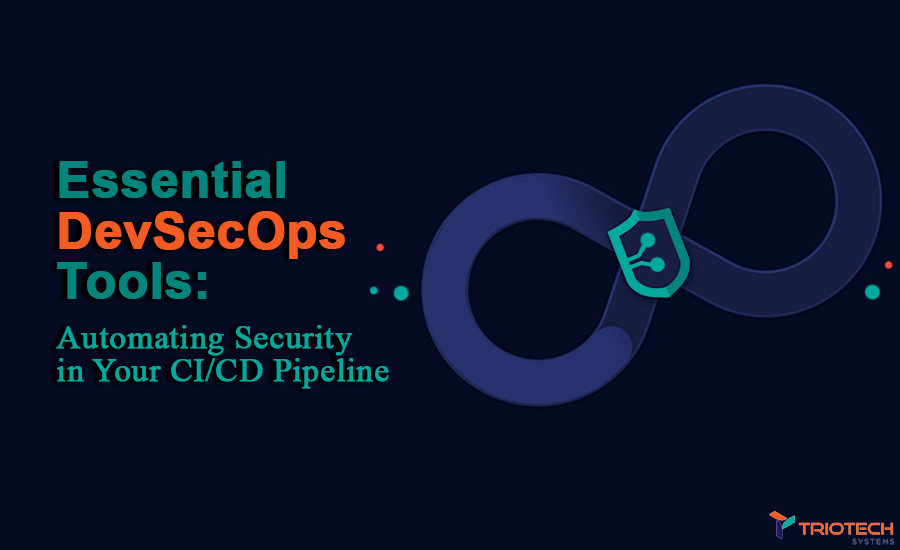In the fast-paced world of software development, ensuring the security of applications is a challenge that cannot be overlooked. The DevSecOps approach, which integrates security practices within the Continuous Integration/Continuous Deployment (CI/CD) pipeline, has emerged as a vital strategy. This comprehensive guide explores the essential tools for automating security in your CI/CD pipeline, offers insights on integrating these tools effectively, and highlights the benefits of automation. Additionally, we delve into the innovative trend of machine learning-enhanced security tools that are setting new standards for CI/CD pipelines.
DevSecOps Security Testing Categories for CI/CD Automation
Incorporating security practices into CI/CD pipelines is crucial for identifying and mitigating vulnerabilities throughout the software development lifecycle. Here, we explore critical types of security testing that are essential in the DevSecOps approach, alongside examples of tools that support these testing methods:
Static Application Security Testing (SAST)
SAST involves scanning source, byte, or binary codes for vulnerabilities without executing the program. It’s instrumental in identifying issues early in the development phase.
Tools:
CheckMarx: Offers comprehensive SAST solutions that integrate seamlessly into CI/CD pipelines, facilitating early detection of security issues.
Fortify: Fortify covers many programming languages and integrates them into development environments, providing detailed vulnerability reports and recommendations.
Veracode: Provides a scalable SAST solution that integrates with development environments, enabling developers to find and fix security issues early in the software development lifecycle.
SonarQube: An open-source platform for continuously inspecting code quality, including detailed security vulnerabilities and coding rules.
Dynamic Application Security Testing (DAST)
DAST identifies vulnerabilities in running applications, simulating external attacks to find issues like injection flaws and authentication problems.
Tools:
OWASP ZAP (Zed Attack Proxy): An open-source DAST tool that automates finding security vulnerabilities in web applications during testing phases.
Acunetix: Scans your web applications against vulnerabilities, including SQL Injection and Cross-Site Scripting, and integrates into CI/CD for real-time scanning.
Burp Suite: Offers a powerful suite of tools for executing manual and automated security tests of web applications, with capabilities for integrating into CI/CD pipelines for continuous testing.
Netsparker: An easy-to-use web application security scanner that automates the discovery of security flaws, offering proof-based scanning technology.
Interactive Application Security Testing (IAST)
IAST tools work from within the application to monitor its behavior and detect security vulnerabilities in real-time, offering a blend of SAST and DAST benefits.
Tools:
Contrast Security: Provides IAST solutions that work alongside applications to detect vulnerabilities and protect against attacks, easily integrating into the CI/CD workflow.
Synopsys Seeker: Seeker’s IAST technology offers real-time, interactive testing and security analysis within the application runtime environment.
HCL AppScan: Combines static, dynamic, and interactive testing for comprehensive application security testing, seamlessly integrating into development pipelines for real-time vulnerability detection.
Tenable.io: Provides web application scanning that combines DAST and IAST approaches, offering continuous visibility and tracking of vulnerabilities.
Software Composition Analysis (SCA)
SCA tools analyze open-source components and libraries within applications for known vulnerabilities, license compliance, and security risks.
Tools:
Black Duck: Specializes in identifying vulnerabilities in open-source libraries, offering detailed risk assessments and automated policy enforcement.
Sonatype Nexus: Provides comprehensive SCA capabilities, ensuring open-source components are secure, up-to-date, and compliant with licensing requirements.
JFrog Xray: Performs deep recursive scanning and analysis of binary components, identifying issues related to open-source libraries and dependencies.
Snyk: Specializes in open-source and developer-first security, offering extensive databases of known vulnerabilities and automated fix suggestions.
Integrating These Tools Into Your CI/CD Pipeline
To leverage the full potential of these tools, consider the following best practices for integration:
Automated Scanning: Configure these tools to automatically perform scans at critical CI/CD pipeline points, such as after a merge request is approved or a build is completed.
Centralized Dashboard: Use a centralized dashboard or security information and event management (SIEM) system to aggregate and monitor security alerts and vulnerabilities from all tools.
Continuous Feedback Loop: Ensure the tools are configured to provide developers with immediate, actionable feedback, facilitating quick remediation of identified vulnerabilities.
The Advantages of Security Automation
Automating security testing within the CI/CD pipeline brings several benefits:
Proactive Security: Early and continuous detection of vulnerabilities allows for proactive rather than reactive security measures.
Streamlined Development: By automating security tasks, developers can focus more on feature development and less on manual security checks.
Compliance and Documentation: Automated tools can generate reports and logs that aid in compliance with security standards and regulations.
The Future: Machine Learning in DevSecOps
Integrating machine learning (ML) into security tools represents a frontier in DevSecOps. ML algorithms can analyze vast data from past security incidents to predict and identify potential vulnerabilities and abnormal behaviors. This enhances the detection of sophisticated threats and improves the efficiency of security processes.
Conclusion
Organizations can achieve a more comprehensive and proactive security posture by expanding the toolkit for DevSecOps security testing to include a broader array of SAST, DAST, IAST, and SCA tools. When effectively integrated into CI/CD pipelines, these tools empower development teams to address security issues promptly, maintain high development speed, and ensure the delivery of secure software products. Adopting a multifaceted approach to security testing enhances protection against threats and aligns with the dynamic and collaborative spirit of DevSecOps.





